Adaptive Strategic Portfolio Management
Tempo Team
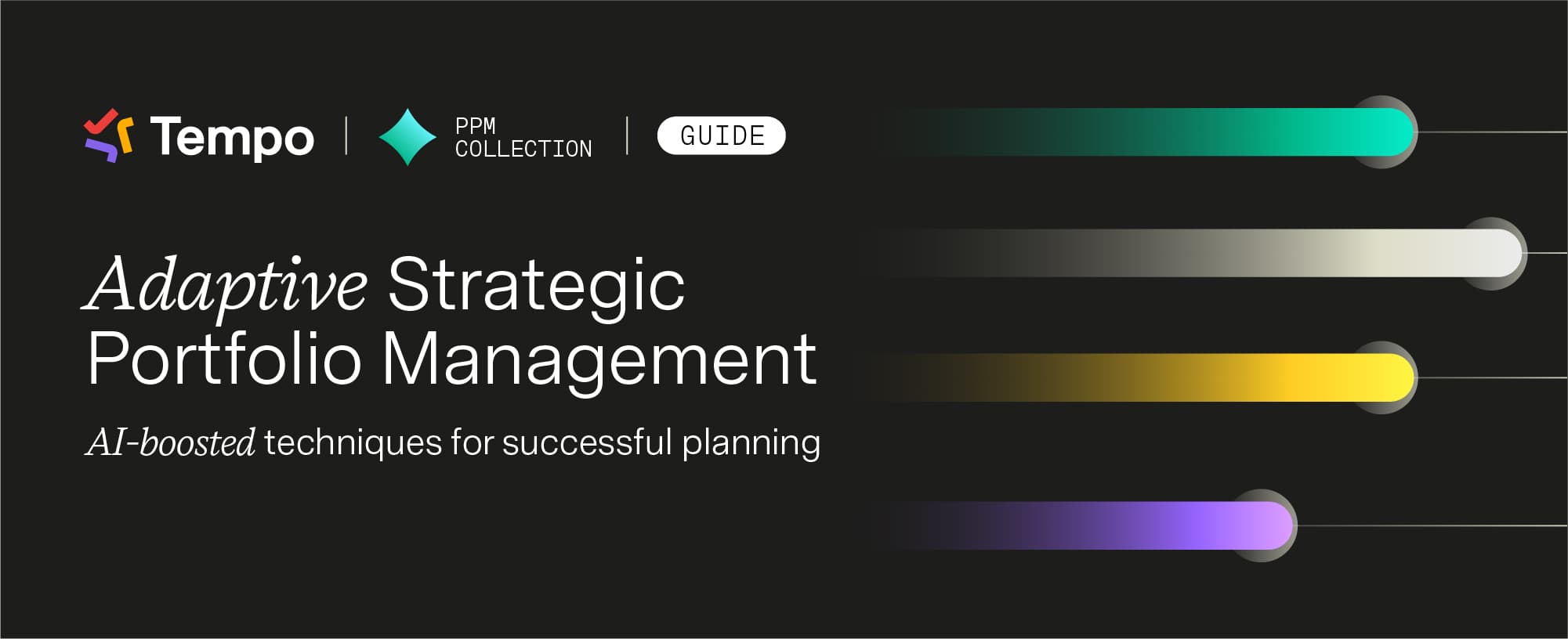
“The only constant is change,” the old saying goes. But there is slow, predictable change and then there’s fast, chaotic change.
That’s the environment businesses face today. Traditional planning approaches no longer suffice. Many core challenges – information silos, lack of visibility into progress, manual processes – are exacerbated by the pace of change. This leads to:
Unrealistic plans, missed deadlines, and excessive time spent on adjustments
Slower delivery velocity, impairing your competitive edge
Missed opportunities, inefficient use of resources, and unmet strategic goals
That’s one reason agile business processes are on the rise. According to Forrester’s The State of Agile Development 2025, 58% of business and technology professionals are prioritizing agile adoption and 95% of professionals consider agile to be critical to operations.
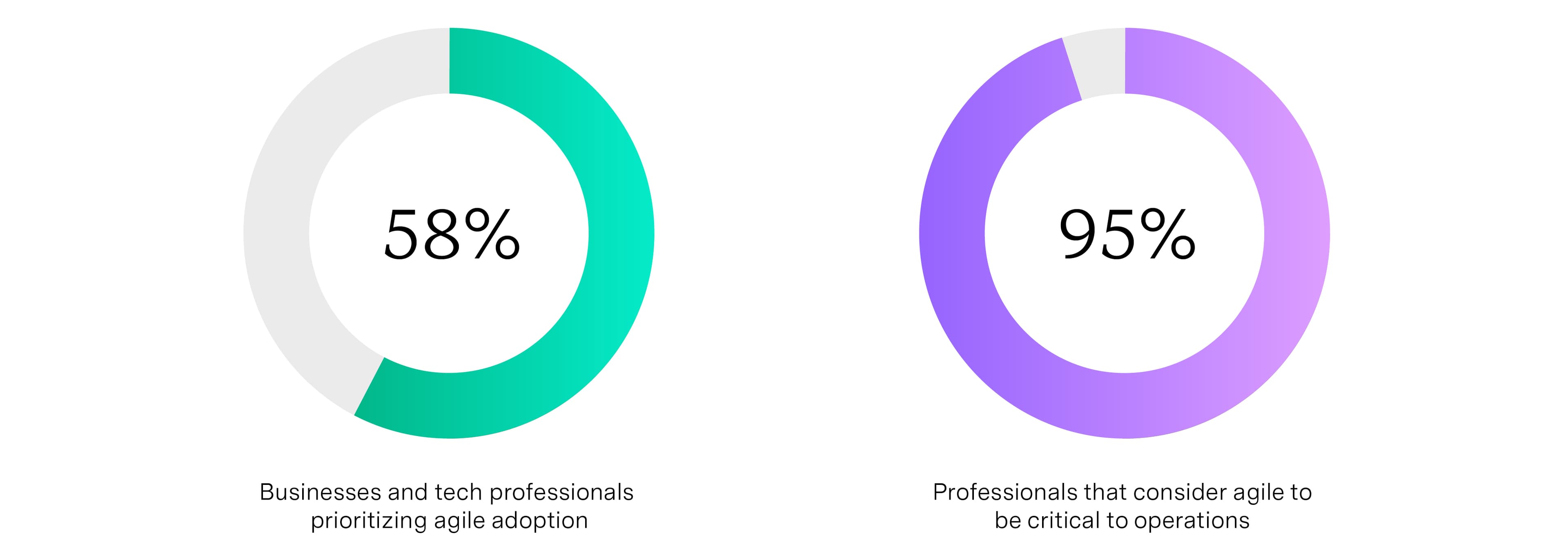
It’s one thing for teams to adopt agile. It’s an entirely different challenge for an entire organization to become nimble enough to change its strategy in real-time.
In this guide, we’ll explore how organizations can implement Adaptive Strategic Portfolio Management (SPM) to make confident, data-driven decisions that keep them several steps ahead in an unpredictable market.
Adaptivity brings an advantage
Annual planning cycles lead to rigid strategies. Teams get locked into long-term plans, making it difficult to react to competitive changes and market shifts. It’s worse than a disadvantage, at this point – it’s a liability. Teams are stuck scrambling, fighting fires, and playing catch up.
There are four big challenges that Adaptive SPM is designed to solve:
1. Gathering data from multiple sources to see the full picture
All too often, teams work in isolation and use different tools for planning, tracking, and reporting. Portfolio managers have to gather data from multiple sources and consolidate it – often in a spreadsheet. Of course, those reports are outdated as soon as they’re built.
2. Building plans that achieve strategic goals
During annual company kickoffs, the big-picture strategy for the year makes perfect sense. But when it comes time to lay out the tactics each program follows, conflicts start to emerge. Multiple projects compete for budgets, talent, and time. Unrealistic timelines start to unravel. Companies fail to use resources effectively, lose time to manual updates, and are unable to confidently predict when projects will be completed.
3. Understanding if work being done is aligned with high-level strategy
At any given time, most planning leaders can’t answer this question: Is all the work being done across the business aligned to our core priorities right now? By the time leadership realizes initiatives are off-track, course corrections happen too late. An Adaptive SPM program gives planning leaders a window into how the organization is focusing its time, costs, and team members.
4. Identifying risks, bottlenecks, or opportunities to accelerate progress
It’s known as the butterfly effect: One small change ripples far beyond its point of origin. One risk in a single project can have an impact across an entire program or portfolio. Adaptive SPM helps proactively pinpoint risks before they happen, and surface a plan of action.
These challenges are a drain on performance. Modern organizations need continuous, real-time alignment of resources, plans, and outcomes. They require systems that can detect changes early, model different scenarios instantly, and enable rapid pivots while maintaining strategic coherence.
What Adaptive Strategic Portfolio Management looks like
What makes Adaptive SPM so critical to business performance? It provides three core capabilities:
1. Ability to align vision and delivery: Planning leaders need centralized dashboards to track real-time progress on initiatives. Teams can see how their work connects to strategic objectives while leadership maintains oversight of portfolio health – quickly spotting any misaligned efforts and making data-informed decisions.
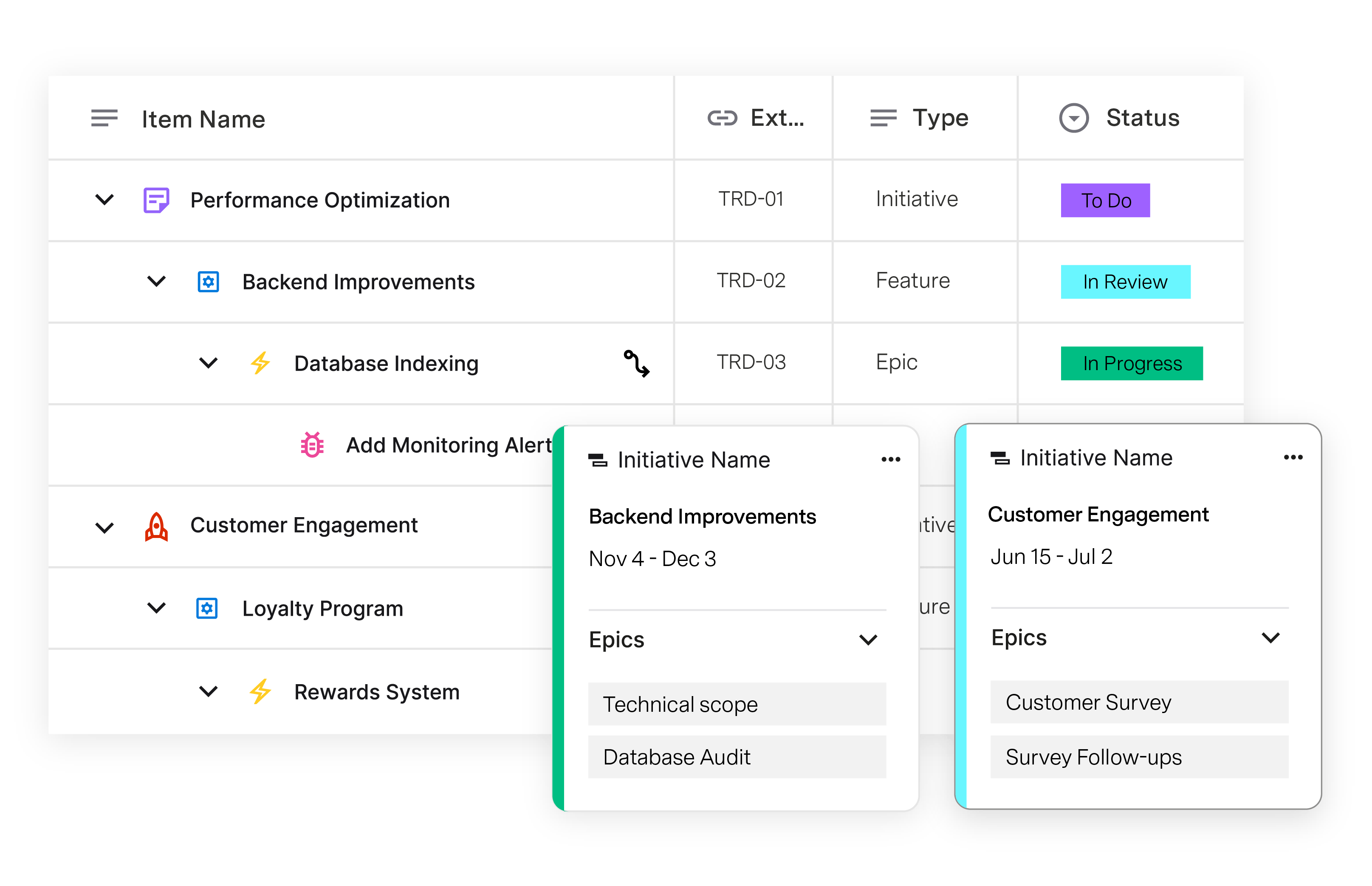
2. Unified portfolio views: Agility isn’t a competitive advantage if company leaders are flying blind. Adaptive SPM relies on pulling consistent, automated delivery, finance, and capacity data. This information feeds into custom analytics that inform planning decisions and put evidence over intuition.
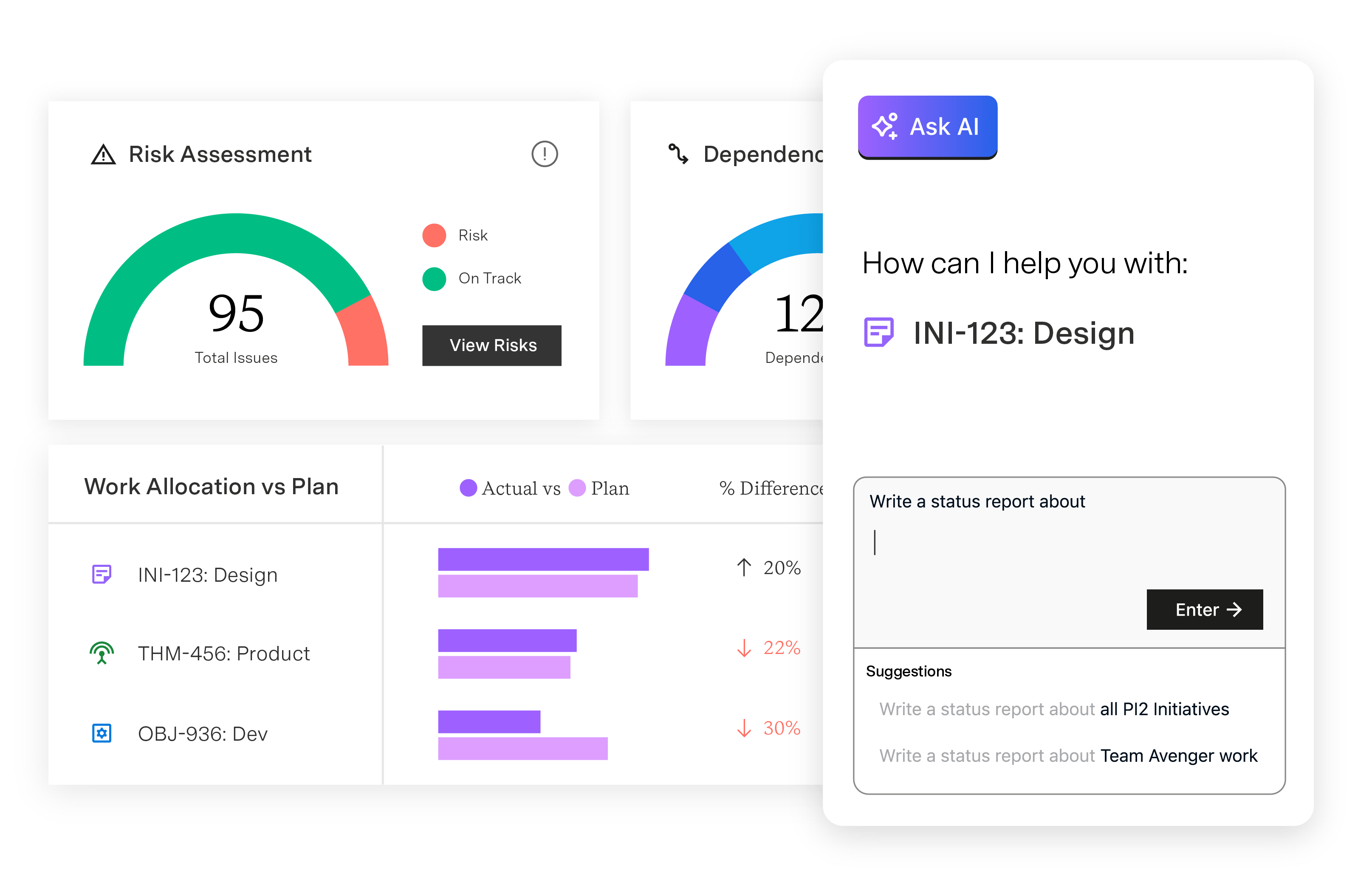
3. Connected, AI-enabled decision-making: With predictive resource optimization, Adaptive SPM transforms how teams, time, and spend are allocated. Instead of reactive decisions, teams can adapt fast when priorities shift – modeling scenarios, identifying capacity constraints early, and adjusting timelines or hiring proactively.

How Tempo’s Strategy Collection enables Adaptive SPM
The Tempo Adaptive SPM Platform gives portfolio leaders the building blocks to be able to confidently adapt to accelerating change.
"Tempo's unique approach to Adaptive Strategic Portfolio Management gives you custom, unified portfolio dashboards for enterprise-wide visibility and control. With the Strategy Collection, you have everything you need to understand effort vs plans, make AI-informed decisions, and adapt fast when priorities shift." - Phil Le Marchand, Strategic Partnerships Program Lead at Adaptavist
Plan, govern, and measure strategic initiatives from the boardroom to delivery teams.
See the Strategy CollectionWith the full suite in place, companies can adjust plans in real time, prioritize time, costs, and people, and keep investments aligned to strategic outcomes.
Structure PPM with Gantt Charts organizes thousands of Jira issues into clear hierarchies – across programs, portfolios, and instances – while visualizing timelines and dependencies. Teams understand how their work fits into broader programs while leaders maintain visibility across the entire portfolio.
“We can easily adapt our quarterly plans as priorities shift. Having a clear view of our progress at all levels – from engineers to executives – makes continuous planning seamless and effective.” - Senior software operations lead for engineers at a major streaming service
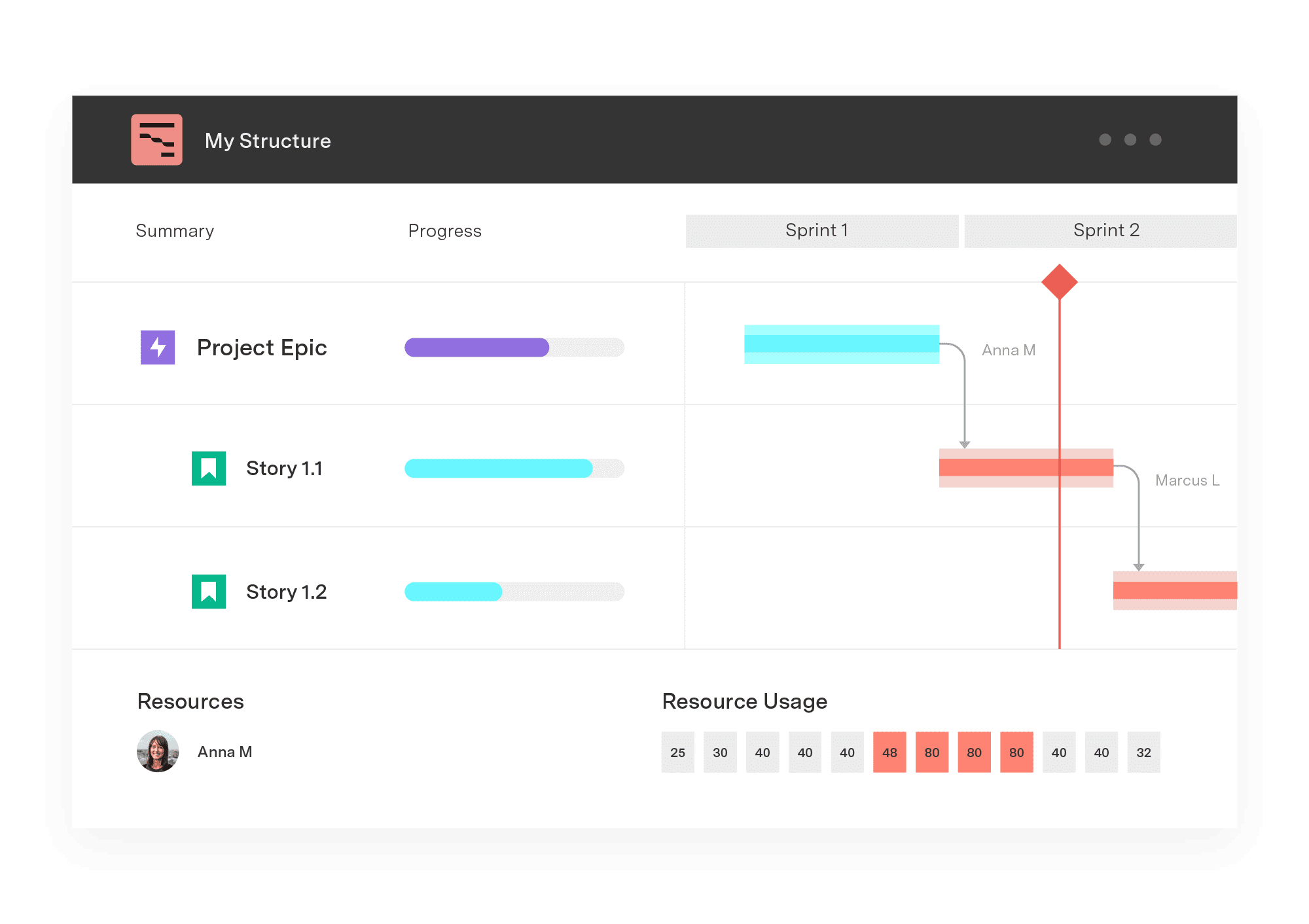
Capacity Planner improves resource allocation based on team skills, availability, and capacity constraints. Portfolio leaders can prevent team overload, identify conflicts before they impact delivery timelines, and spot new opportunities across programs.
“Tempo helps us see everything – from the top of the org to the delivery floor. That’s real enterprise agility.” - Gergo Papp, CoE lead at OTP Bank Group
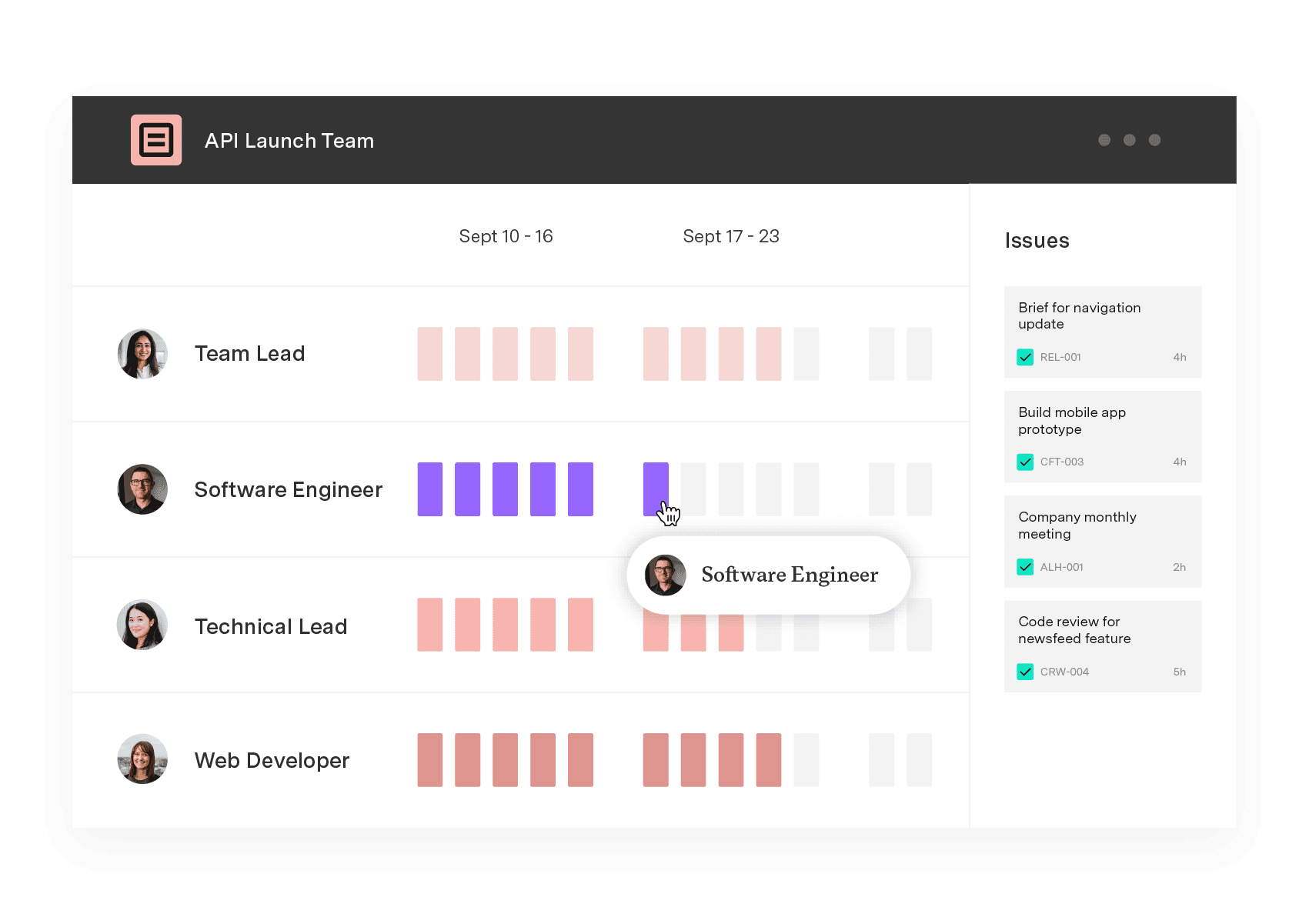
Timesheets captures precise time data directly within Jira workflows, reducing administrative overhead while providing accurate effort tracking. This data feeds into portfolio analytics and financial reporting, creating a single source of truth for resource utilization and project costs.
“Tempo helps us gain insight into work progress and resource allocation to support operational decisions.” - Matyas Blaha, business analyst, AI competence centre at Škoda
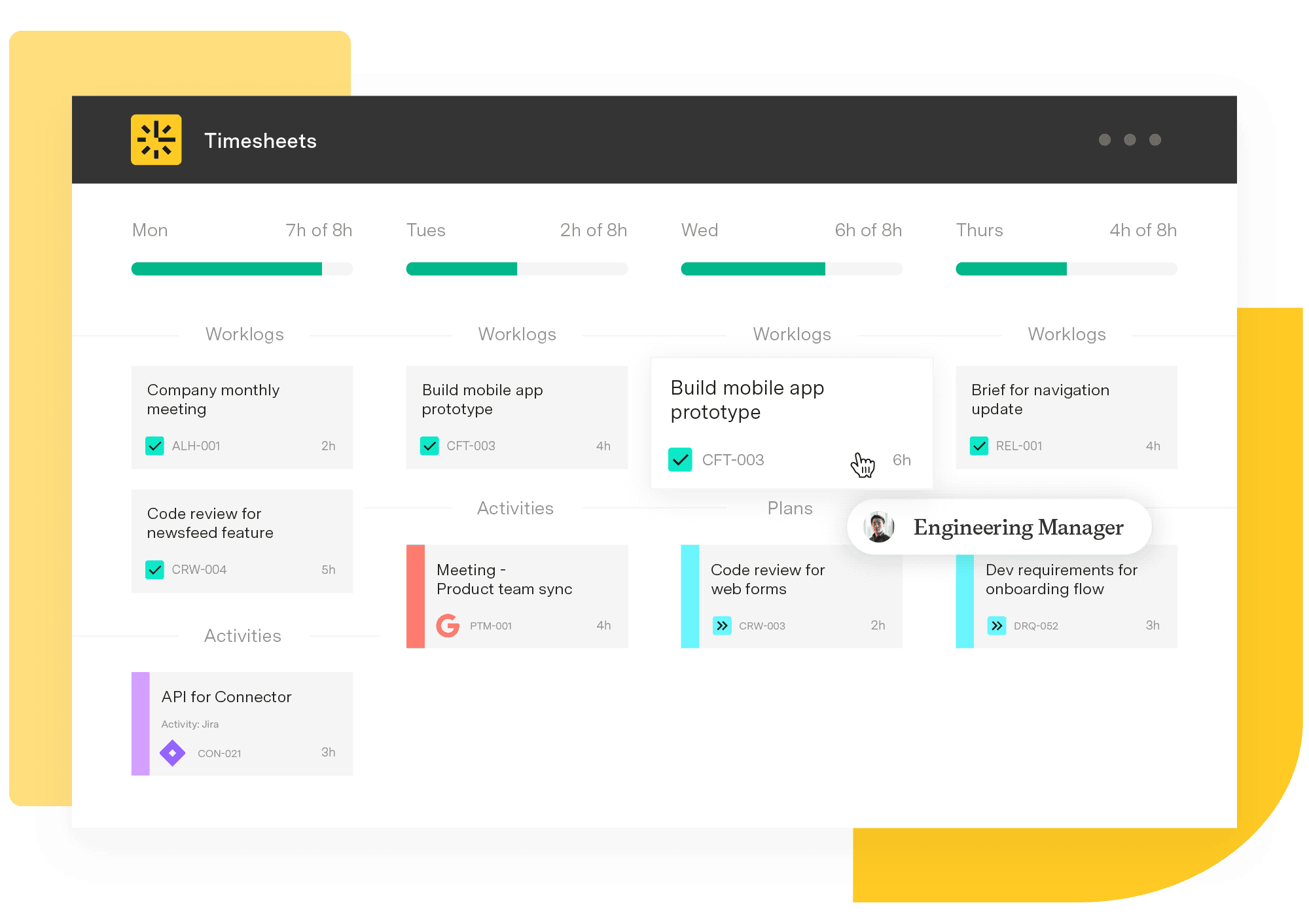
Financial Manager monitors costs, billing, budgets, and revenue across portfolio initiatives. Real-time financial visibility enables ROI-based prioritization decisions and prevents budget surprises.
“Financial Manager has been instrumental in managing project costs at our organization. Tempo has given us actionable daily insights into the projects’ financial health and the ability to prepare monthly reports and billing effortlessly.” - Darina Lubomirova, Jira admin
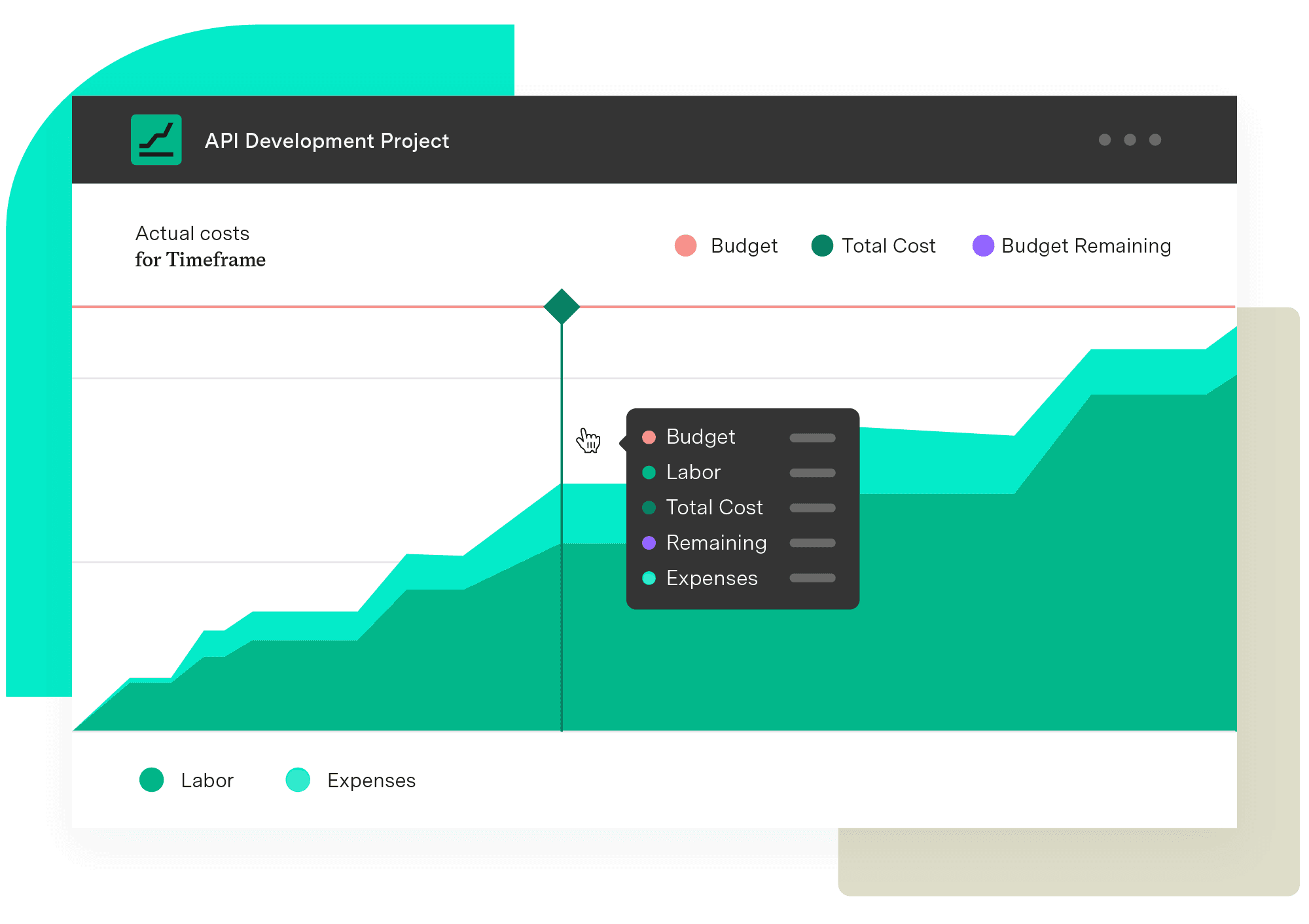
Custom Charts for Jira and Confluence provide no-code dashboard creation across programs and portfolios. Teams can build personalized views that support their specific decision-making needs without requiring technical skills. Executive dashboards update in real-time, eliminating stale reporting cycles.
“Custom Charts has enabled deceptively simple views that give stakeholders intuitive insights into program status – right in Jira.” - Systems engineer at a leading aerospace and defense company

BI Connectors for Jira exports portfolio data to enterprise analytics platforms like Power BI, Tableau, and BigQuery. This enables advanced analytics capabilities, sophisticated scenario modeling, and predictive planning within your existing business intelligence environment.
“We saw 20% billable utilization growth and shortened delivery times by 59% on average almost instantly.” - Dzmitry Hyrb, strategic marketing manager at Deviniti
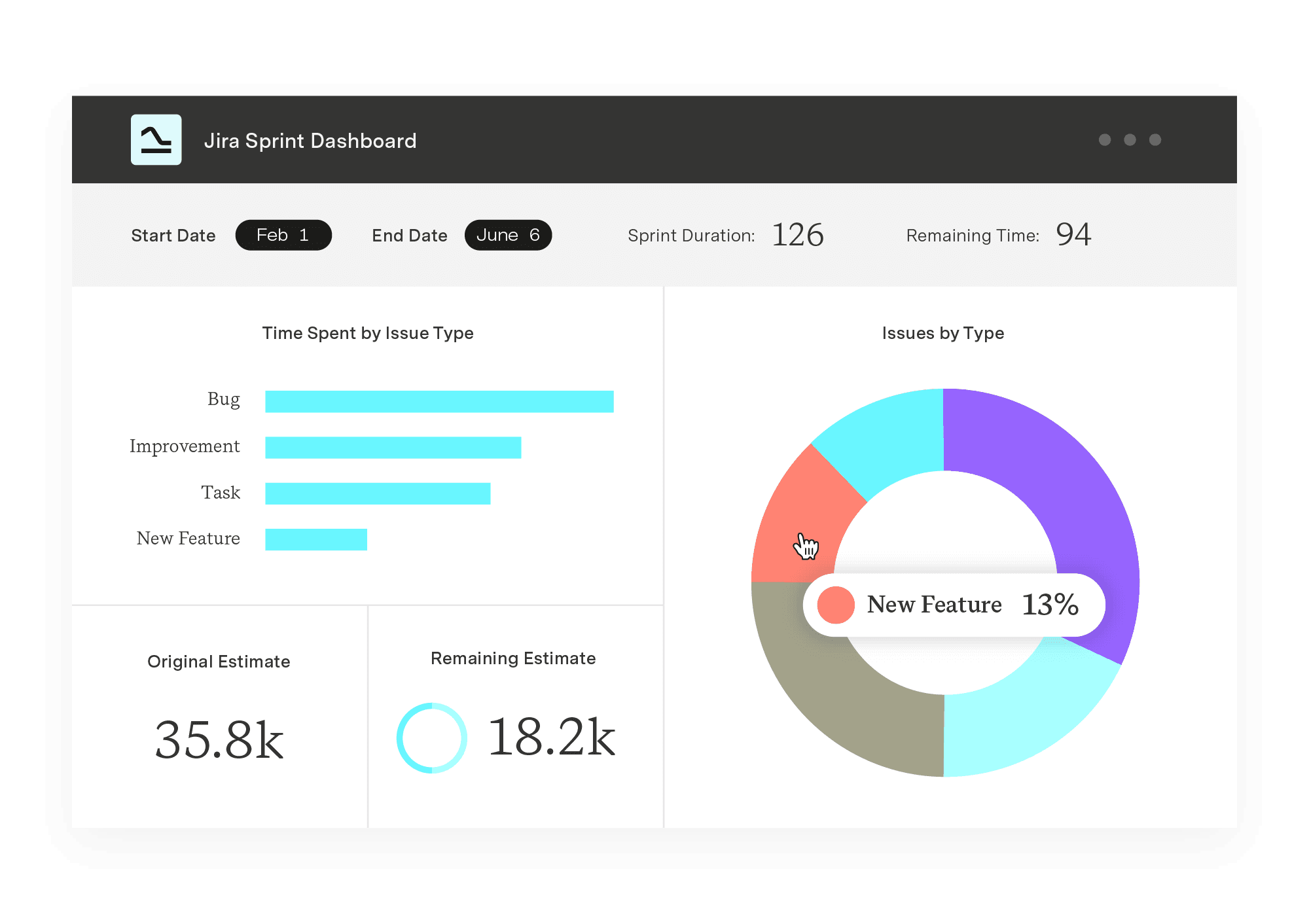
Strategic Roadmaps links enterprise roadmaps directly to Jira execution data. Long-term strategy remains synchronized with tactical delivery as conditions change.
“Adopting Strategic Roadmaps into our product management organization has transformed how we manage our products. Roadmaps helps each of my product managers remain focused on the right mix of transformative efforts and backlog items for each of their products.” - Lauren Kaeppner, product team leader at Staples
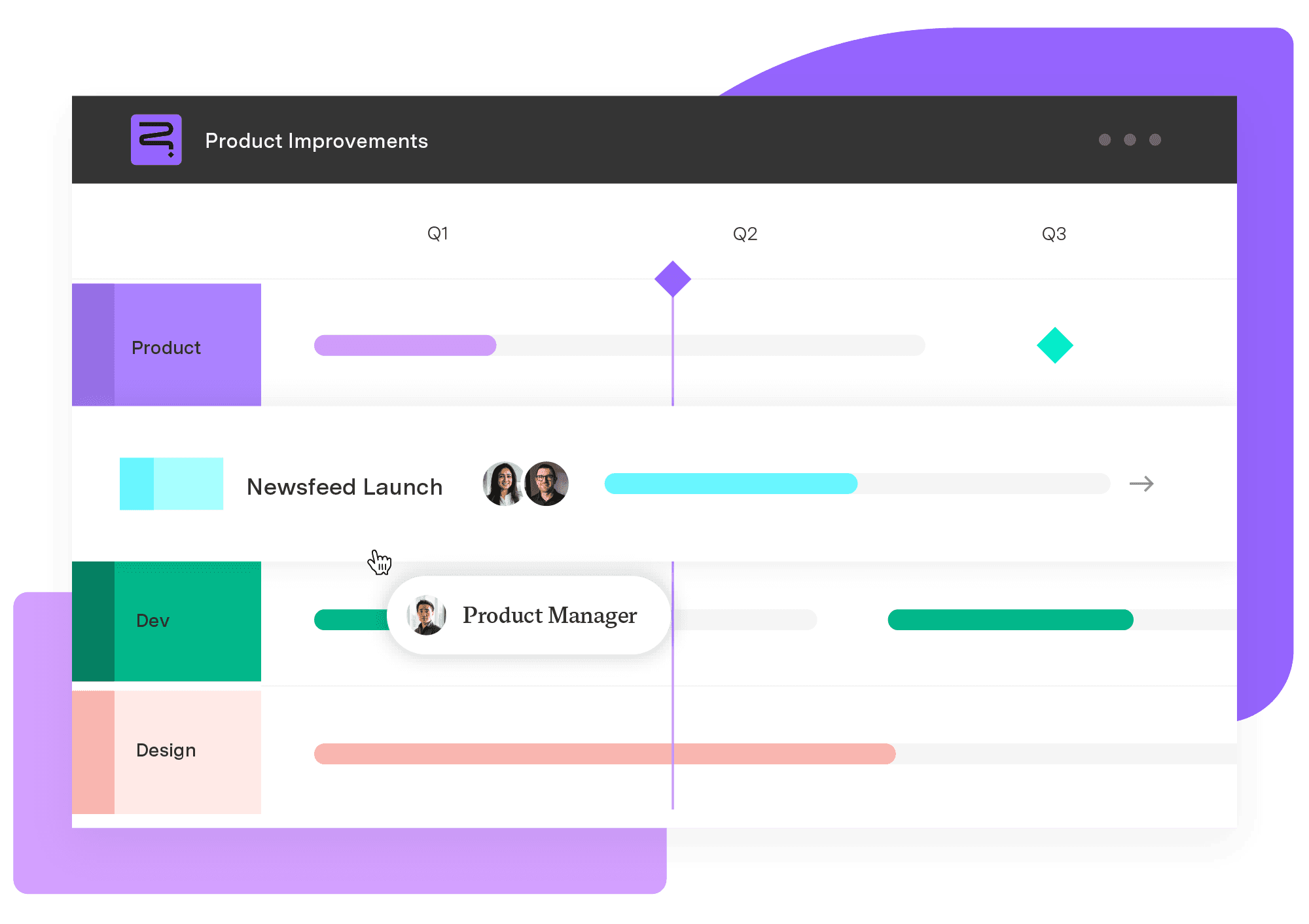
The modular path to transformation
While Tempo's Strategy Collection is a comprehensive foundation, it’s a modular suite. That means your team can take steps toward building Adaptive SPM from any point. Most Tempo customers start with focused implementations that address the highest-priority challenges, demonstrating value at each stage as they scale up.
Early wins create confidence and momentum for broader transformation. Each module strengthens the foundation for AI-powered capabilities.
“Tempo’s flexibility allows different teams to use the tools in the way that best fits their needs. Whether it’s tracking time for auditing, managing budgets, or optimizing capacity, Tempo provides the visibility we need to keep operations running smoothly.” - Jan Ometak, product owner at Škoda
The Strategy Collection prepares organizations for Adaptive SPM by establishing clean data flows, standardized processes, and aligned teams. When organizations are ready for predictive planning, they have years of organized data for AI systems to learn from, maximizing the value of intelligent capabilities.
“Structure formulas do all the heavy lifting in the background. Everything is automated. The system updates itself – and stakeholders can make decisions safely knowing the data is backing them.” - Desirie Du Toit, process engineer at Matogen Zebra
Integrations drive scalability
Tempo’s Strategy Collection has the advantage of deep integration with Jira. This reduces change management overhead, and delivers fast time-to-value. Teams continue working in familiar environments with minimal context switching and accelerated adoption.
“We’ve cut scoping time from days to hours. We can now group work dynamically, check dependencies, and make decisions faster than ever before.” - Matthieu Beaufils, corporate application manager at Rexel
Case study: Demicon Austria
Demicon Austria is a leading provider of IT solutions, known for its expertise in digital transformation. Since 2008, they've been helping businesses future-proof their operations with a people-first approach.
Managing 300 housing projects in Vienna with a 500-user data center and over 200 project managers was a colossal task. The need for clear oversight and coordination across numerous milestones was paramount.
Demicon Austria began implementing the Tempo suite. These tools offered a comprehensive overview and seamless tracking of project milestones within Jira, drastically improving project visibility and management.
“We can now see 15-20 regulated milestones for our 300 projects in a single overview. Other tools don’t give you that overview, nor the possibility to drill down into the specifics. The simplicity and intuitive nature of these tools empowered us to achieve amazing results.” - Tina Myerscough, CEO at Demicon Austria

Adaptive SPM has arrived
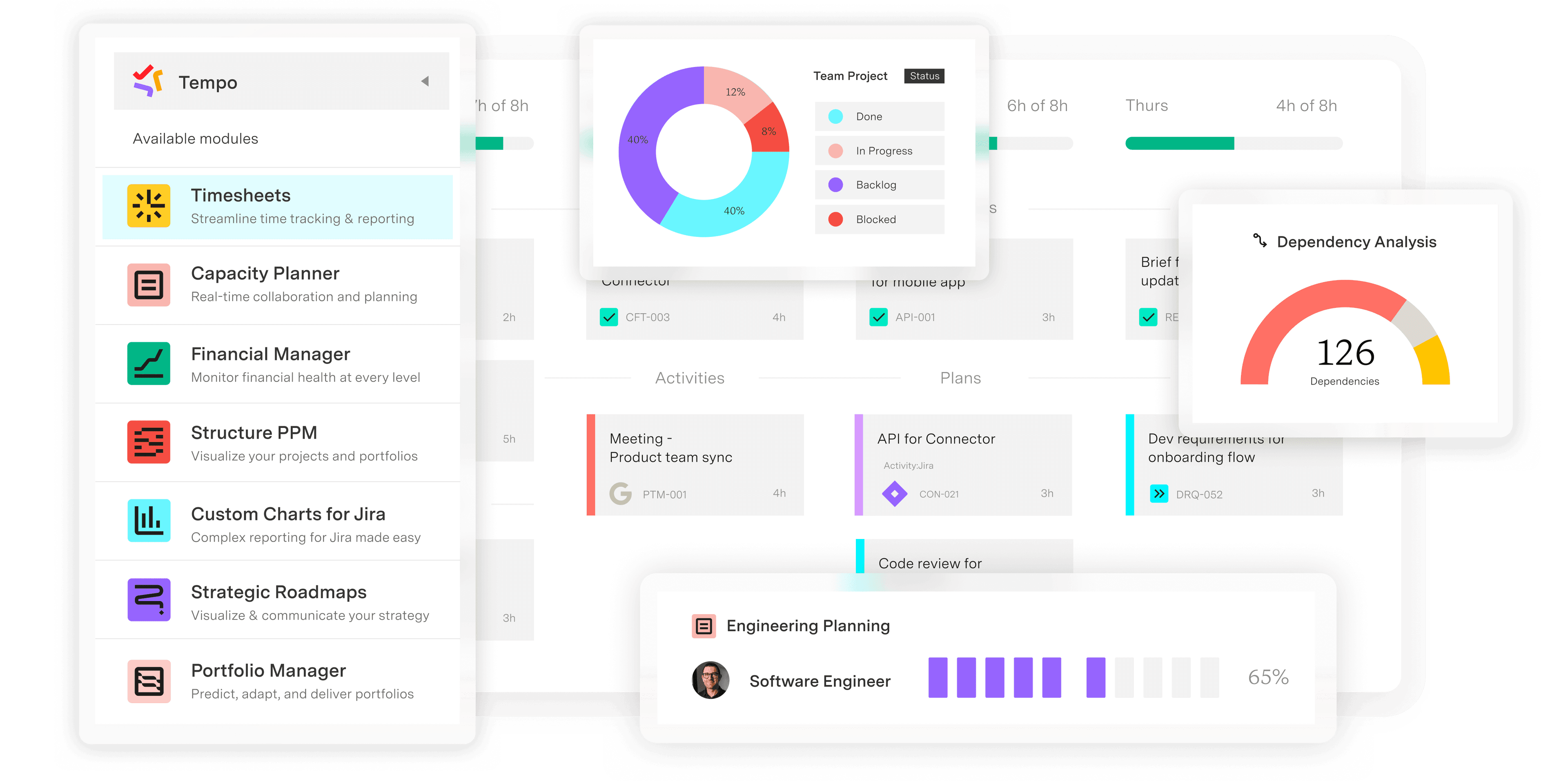
Static planning belongs in the past. Modern organizations need the ability to connect strategy to execution in real-time. Adaptive SPM, powered by Tempo’s Strategy Collection, delivers the intelligence organizations need to thrive in uncertainty.
Explore the Strategy Collection and bring a new level of strategic alignment to your organization.


